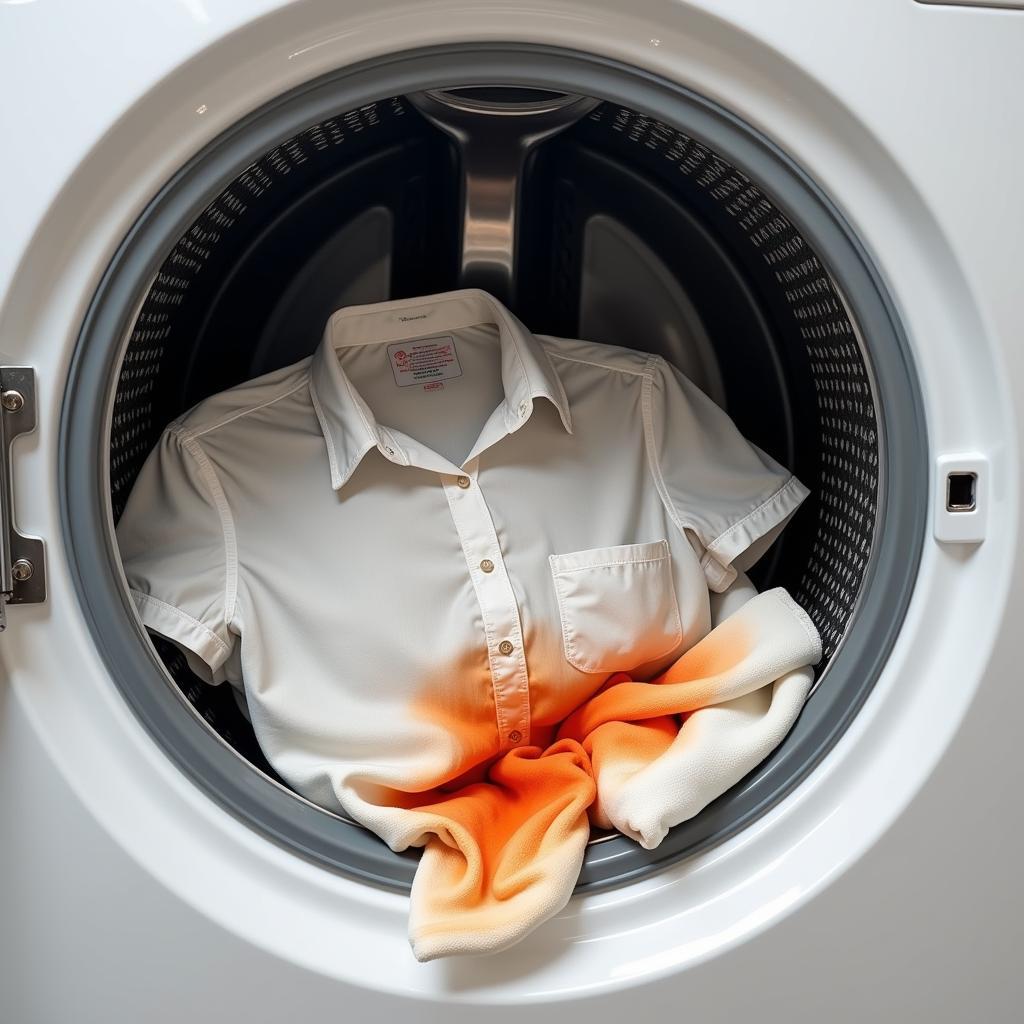Color bleeding, the unfortunate phenomenon of dye transferring from one garment to another during washing, can turn your pristine whites into a tie-dye nightmare. But don’t despair! This comprehensive guide will equip you with the knowledge and tools to combat color bleeding effectively and keep your clothes looking their best.
Understanding the Enemy: Why Do Clothes Bleed Dye?
Before we delve into the solutions, let’s understand the culprit. Color bleeding occurs when excess dye molecules in a garment, especially new ones, escape the fabric when exposed to water and agitation during washing. This fugitive dye then attaches itself to other fabrics, causing unwanted color transfer. Factors like fabric type, dye quality, and washing practices can all contribute to this color chaos.
Proven Strategies to Fix Color Bleeding in Clothes
1. Act Fast: Time is of the Essence
The sooner you address color bleeding, the higher your chances of reversing the damage. Allowing the dye to set makes it more challenging to remove.
2. Don’t Retaliate with Heat: Avoid the Dryer
Heat sets stains, and color bleeding is no exception. Before attempting any remedies, ensure the affected garments are completely dry without using a dryer.
3. The Power of White Vinegar: A Natural Dye Remover
White vinegar is a household hero with its remarkable ability to neutralize and lift stains, including dye transfer.
Here’s how to use it:
- Fill a basin or sink with cold water.
- Add one cup of white vinegar to the water.
- Submerge the color-bled garment in the vinegar solution and let it soak for 30 minutes to an hour, depending on the severity of the bleeding.
- Rinse the garment thoroughly with cold water.
- Wash the garment again as usual.
Pro Tip from Emily Carter, Textile Restoration Specialist: “White vinegar is a gentle yet effective way to combat color bleeding. It works wonders on both fresh and set-in dye stains.”
4. Unleashing the Power of Baking Soda: A Stain-Fighting Superstar
Baking soda, another pantry staple, acts as a natural stain remover and odor absorber. It’s particularly effective in lifting dye stains from white fabrics.
Follow these steps:
- Make a paste by mixing half a cup of baking soda with enough water to create a thick consistency.
- Apply this paste directly onto the stained areas of the garment.
- Gently rub the paste into the fabric and let it sit for an hour.
- Rinse the garment thoroughly with cold water.
- Launder the garment as usual.
5. Commercial Color Removers: Your Last Resort
If natural remedies fail to deliver desired results, commercial color removers designed specifically for treating dye transfer can be your saving grace. However, always use these products cautiously, following the manufacturer’s instructions carefully.
 Laundry with color bleeding
Laundry with color bleeding
Preventing Future Color Bleeding: Proactive Measures for Vibrant Clothes
Prevention is always better than cure. Implementing these preventive measures can save you from the heartbreak of color bleeding in the first place.
1. Sort Your Laundry Like a Pro: Color is Key
This age-old advice holds true. Always sort your laundry by color – whites, lights, and darks – to minimize the risk of unwanted dye transfer.
2. Turn Garments Inside Out: Protecting the Face of Fashion
Turning your clothes inside out before washing helps protect the outer layer from abrasion and minimizes dye transfer during the wash cycle.
3. Cold Water is Your Friend: Gentle on Colors
Hot water can cause dyes to loosen and bleed. Opt for cold water washes to preserve the vibrancy of your clothes and prevent color bleeding.
does cold wash make colors bleed
4. Color Catchers: Your Secret Weapon Against Dye Transfer
Color catcher sheets are infused with special ingredients that attract and trap loose dyes during the wash cycle, preventing them from settling onto other garments.
can i dry white and colored clothes together
5. New Clothes, Special Treatment: The First Wash is Crucial
New clothes, especially brightly colored ones, are more prone to bleeding. Wash them separately for the first few washes to prevent dye transfer to other garments.
can you dry bleached clothes with colors
can you wash whites with other colors
 Tips to prevent color bleeding in laundry
Tips to prevent color bleeding in laundry
Conclusion
Color bleeding can be a laundry nightmare, but with the right knowledge and proactive measures, you can salvage your garments and prevent future mishaps. Remember to act swiftly, utilize natural remedies like white vinegar and baking soda, and embrace preventive measures to keep your clothes looking vibrant and new. With these tips in your laundry arsenal, you can confidently conquer color bleeding and enjoy a wardrobe filled with vibrant, true-to-color clothes.

